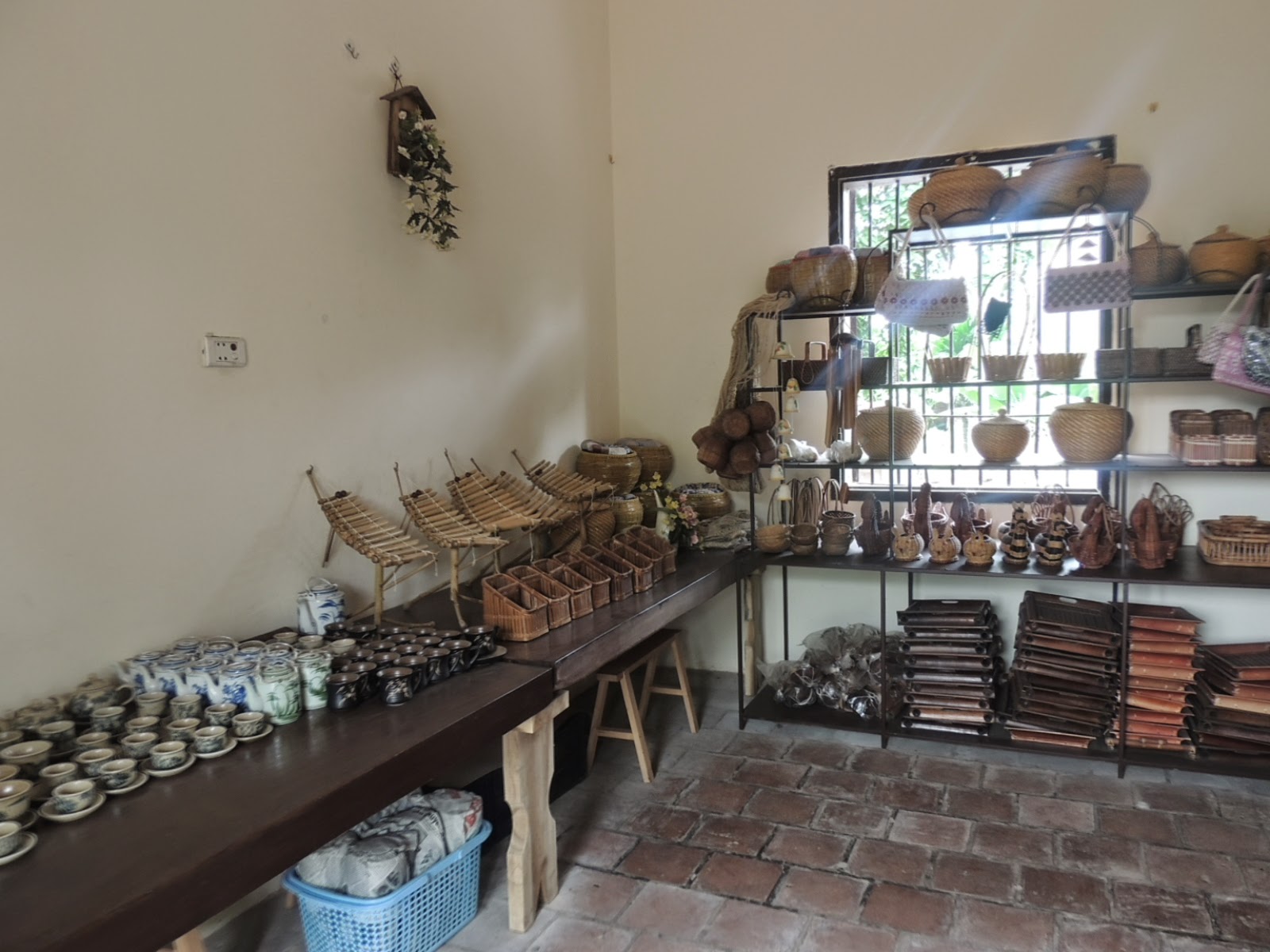You are going on a Vietnam tour visiting all parts of the country, and now you wonder if there is a short journey to join on your last day? Or you just have a limited time and you cannot cover an overnight trip elsewhere? A day tour to Duong Lam might be of your interest, especially if you wish to understand more about Vietnam traditional culture.
The name sounds new, but in fact, Duong Lam was the first rural village to be recognized as national cultural asset in November 2005, and recently awarded Cultural Heritage Conservation in 2013 by UNESCO. Situated about 50km to the west of Hanoi, and also known as "the homeland of two kings" (King Ngo Quyen and King Phung Hung) or "laterite ancient village", Duong Lam is a typical Northern village with 9 different agricultural villages, maintaining a lot of traditional activities and lifestyle.
It takes around 1.5-hour scenic road trip to reach the village, and it's like escaping the noise and emissions to enjoy fresh air of the countryside. On the way we will stop to visit a silk making factory in Van Phuc Silk Village, which is famous with the unique silk making techniques. The other stop is Tay Phuong (West) Pagoda, well known for its stunning 18 monk statues.
When arrive Duong Lam, we enter the village through a big gate near an old banyan tree, and this is a special cultural feature in Vietnam countryside. The first impression is that almost all ancient houses here are made with laterite brick walls and big wooden doors.


 In general, the traditional house in Duong Lam village consists of
main room (living room) with the ancestor altar in the center and outer rooms on the two sides. In the main room, there are four principal columns, surrounded by side columns. The columns, beams and roof frame are assembled scrupulously, and together with
the fine carvings and ornaments, they add to the grandeur of the house. The sided rooms are used as bedroom, storage or work space for all members in the family.
In general, the traditional house in Duong Lam village consists of
main room (living room) with the ancestor altar in the center and outer rooms on the two sides. In the main room, there are four principal columns, surrounded by side columns. The columns, beams and roof frame are assembled scrupulously, and together with
the fine carvings and ornaments, they add to the grandeur of the house. The sided rooms are used as bedroom, storage or work space for all members in the family. Take a short walk to Mong Phu hamlet, and you can see a small church in French style erected in 1953. It was designed by a Vietnamese priest and built by many
carpenters from other villages. The outside and the inside looks magnificent with gothic architecture. During the French colonial period, there were
about 100 Christian households. Until now it is still open on every Wednesday and all special ocassions. Inside the church there is a unique bell that will ring everyday at 12pm to notice the villager as a break.
Take a short walk to Mong Phu hamlet, and you can see a small church in French style erected in 1953. It was designed by a Vietnamese priest and built by many
carpenters from other villages. The outside and the inside looks magnificent with gothic architecture. During the French colonial period, there were
about 100 Christian households. Until now it is still open on every Wednesday and all special ocassions. Inside the church there is a unique bell that will ring everyday at 12pm to notice the villager as a break.
You can enjoy the local food at one of these ancient houses. Some people here just opened a restaurant inside their houses to serve travelers. The dishes served are just simply Vietnamese traditional food, but having really good taste, such as grilled chicken, springrolls, cucumber salad... In the past, the locals cultivated sugarcane; therefore the village is also the homeland of traditional sweet food such as Gai cake (glutinous
rice cake with sweet green bean inside, wrapped in Gai leaves - which makes its black color), peanut candy,
sausage – shaped candy, Che Lam (sweet glutinous rice bar with ginger flavor) etc. When you come to visit each house, you will be invited to try Che Lam and green tea, a special complimentary of Vietnam.


Many households in the village still make sauce with traditional method. The sauce is normally made from corn or green bean, just in some ways similar to soybean paste of Japan, but the flavor is much more amazing.
You can also have the chance to visit some ancient houses exhibiting crafts and handmade products like paintings, wooden souvenir etc. And another exciting part of the visit is meeting the local people, and talking with them to understand more about the culture. In the old days, daily clothing of women was like that, with a brown short blouse, normally made from silk, and black loose pants. They made up their long hair
with a black small scarf, then put on a special shawl called Khan Mo Qua to be tied in a
triangle as a crow beak on the forehead. Nowadays, only the elder keeps using this traditional
costume.
On the way back to Hanoi, there are some stops for a quick visit: a craft village that making wooden Buddha statues and a lacquer painting workshop where you can know more about the process of making lacquer painting...


Everything is just within one day, but you will be able to explore a lot about the Northern traditional culture, and it's really worth a try, isn't it?










0 comments:
Post a Comment